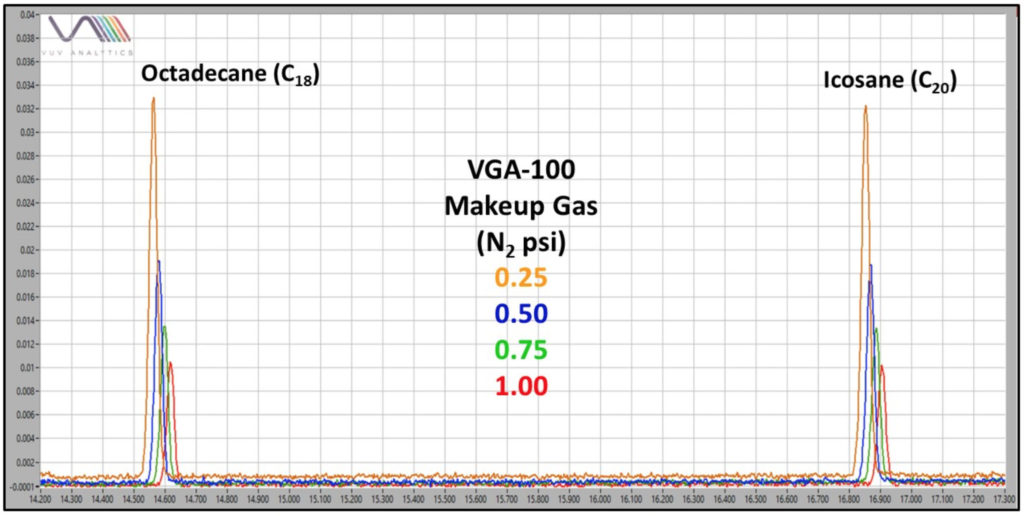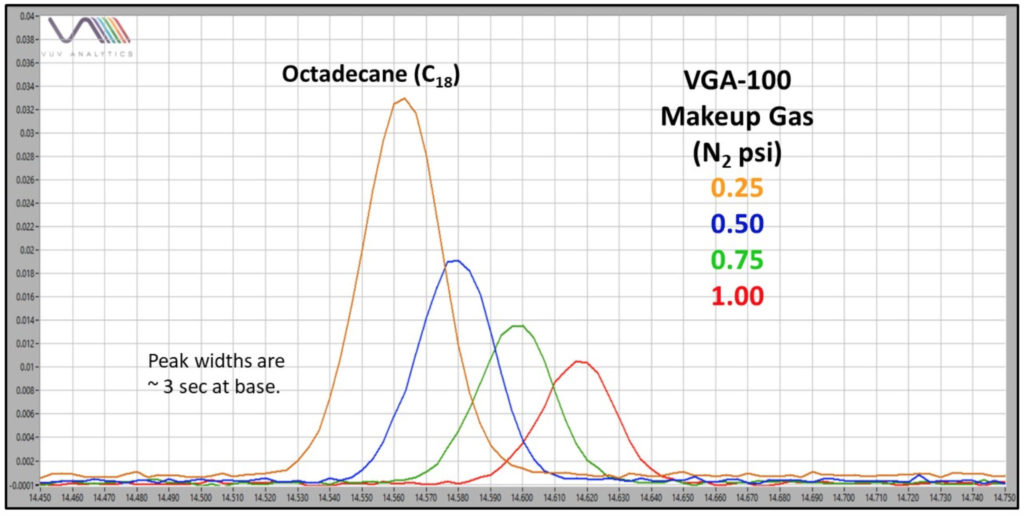Published Jack Cochran on October 10, 2017
We use makeup gas for our VGA-100, the world’s only vacuum ultraviolet spectrometer for GC. As with any typical GC detector, other than a mass spectrometer, makeup gas is employed to efficiently sweep analytes eluting from the GC column through the detection area, which in this case is a flow cell exposed to deuterium lamp light passing through two transparent windows. Another function of the makeup gas flow in this case then is to keep those windows clean so that less volatile sample residue does not build up on them. I guess in that regard, dilution is the solution to pollution.
However, dilution with makeup gas can reduce sensitivity for VUV detection, as it directly impacts analyte residence time in the flow cell. Higher makeup gas pressure = higher makeup gas flow = less analyte residence time in the flow cell = lower detectability for a compound of interest. And some people say I’m not good with equations!
A simple experiment where the nitrogen makeup gas pressure was varied from 0.25 (recommended) to 1.00 psi for the VGA-100 while data was collected from the GC analysis of an alkanes standard makes the point above. Increasing the makeup gas pressure only hurts detectability and does nothing to improve peak shape (Figures 1 and 2). To sum up, when you’re in the lab, don’t put too much pressure on yourself…or your VUV detector for GC.









Leave a Reply